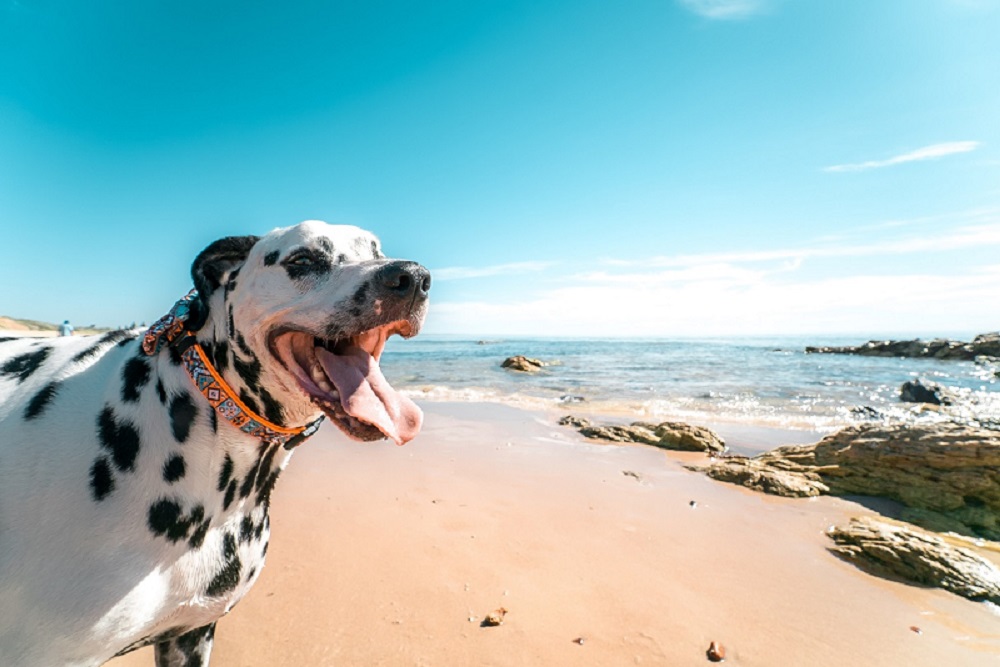
Ahhhh … summertime. The favorite season of everyone who lives near the New Jersey coast means beach trips, backyard picnics, and long days spent exploring the outdoors. Unfortunately, fun outings can present a host of unexpected hazards for your furry friend. Read on to learn how to recognize summer dangers, and how to be prepared to act quickly should your pet get into trouble.
Days filled with blazing sun and scorching temperatures may be perfect for the beach, but they’re not so much fun for your pet. Dogs and cats can quickly become overheated if left outdoors, or inside without air conditioning, when temperatures and humidity rise. Some pets, such as brachycephalic breeds who have short muzzles, like pugs, are more likely to develop heatstroke because their shortened airways are less efficient at cooling by evaporation.
On hot days, monitor your pet for signs of heatstroke, which include:
If your pet displays signs consistent with heatstroke, take her inside to a cool place and offer her fresh, cool water to drink. If she does not improve in 10 minutes, take her to Linwood Pet Hospital or your primary care veterinarian immediately.
Follow these tips to prevent your pet from developing heatstroke:

Taking your pooch to the beach can be fun, but avoid common seaside hazards to ensure a disaster does not ruin your fun day. Many dogs seem born for the water, but don’t assume your pet can swim if she hasn’t taken a dip before. Not all dogs are natural swimmers, and if you throw your pooch into deep water, she may struggle or drown. Never take an inexperienced swimmer into deep water with you—your dog may panic, try to climb onto you, and pull you under.
Start at the water’s edge with your dog on a leash and allow her to slowly become comfortable with the water at her own pace. Once she gains confidence, she may venture into deeper water, but keep her tethered so you can help if she gets into trouble.
While you are enjoying your day at the beach, ensure you have plenty of fresh water for your dog, because saltwater can present a life-threatening hazard if your thirsty pooch decides to drink it. The sodium chloride can cause severe dehydration, kidney damage, brain swelling, and death. Signs can appear from 30 minutes to several hours after ingestion, and include:
If you think your pet may have been drinking salt water, seek veterinary care immediately, because its toxicity can be deadly. Pets may seem fine after leaving the beach, only to develop signs later that quickly progress to death.
To prevent saltwater toxicity, be prepared with these tips:
Summer is the most likely time for your pet to escape her yard and venture out onto the streets. Backyard picnics provide prime escape opportunities, since while you are busily scurrying around, a houseguest may leave a gate or door open. As your pet explores the open road, she may forget to watch for cars and get hit. Pets often suffer serious injuries when hit by a car, including:
If your pet is hit by a car, take her to your veterinarian immediately. Many internal injuries are not readily apparent, and a professional examination to rule out serious damage is critical. If she has a wound that is actively bleeding, apply pressure with a towel or gauze, and bandage the wound on the way to the hospital.
Take precautions to prevent losing track of your pet, such as:
If you have questions about keeping your pet safe this summer, or you think she may be in trouble with a heat-related condition, contact us immediately.